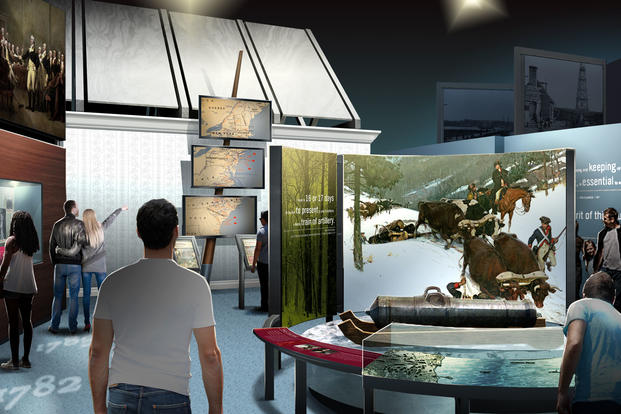We celebrate the Army’s Birthday on June 14 to commemorate the Continental Congress’ 1775 resolution to create a united fighting force for the thirteen colonies in the war against Great Britain. Created over a year before the Congress declared independence, the Army served as a unifying symbol for the colonies even before the nation was officially formed. With the new nation emerging victorious in 1783, the fate of its Army remained fragile. The important story of how the nation’s nascent government defined the Army’s role in times of peace and conflict and established the Army we know today will be one of many stories told at the future National Museum of the United States Army (NMUSA), located at Fort Belvoir, Virginia.
Whether to maintain a standing army following the Revolutionary War’s end in 1783 was a significant issue for the new nation, some Americans believed in the necessity of a permanent army to ensure national security, while others considered the force not only expensive, but a threat to the newly formed government. In the “Foundations of the Army” exhibit, located in NMUSA’s Founding the Nation Gallery, visitors will explore the issues surrounding this important debate which culminated during the Constitutional Convention of 1787.
Visitors will learn about the stipulations written in the U.S. Constitution that granted Congress the power to raise and regulate an army, while naming the President as Commander-in-Chief of the Army. Through this system of checks and balances, no single person would have sole control of the new nation’s armed forces. The exhibit will explain that the U.S. Army is governed by the delicate relationship between Congress and the President, and therefore it cannot legally take action in its own accord.
Having an army during peacetime was a major point of contention during the early years of our nation’s founding. In the exhibit, visitors will learn about the ongoing debate of the time to determine the Army’s future. Because of the sometimes tenuous relationship between the states, particularly in the nation’s infancy, representatives from different states believed that individual state militias would be more than sufficient in providing defense against outside threats. While the Constitution does not require the maintenance of an army at all times, the U.S. Army has remained an important part of the nation’s history, its size and influence fluctuating based on the demand in times of peace or times of conflict.
The “Foundations of the Army” exhibit will also highlight the Newburgh Conspiracy, an important moment in the American and Army history. In March of 1783, Army officers, disgruntled for not being paid, met at Newburgh, New York, to take action against Congress. Army officers were considering mutiny against the new government, but General George Washington intervened and convinced them to pledge their loyalty to the government. This event came to represent the concept of civilian authority over the armed forces which remains a fundamental value in America today.
The exhibit will explore the many important issues the new nation grappled with in forming a new government and maintaining a national army. The compromises made during this crucial period of American history continue to impact the Army today. As we celebrate the Army’s 243rd Birthday we can appreciate the Army’s lasting legacy throughout our nation’s history. The National Museum of the United States Army will preserve this storied history for generations to come.
To learn more about the Army Historical Foundation’s campaign to build the National Museum of the United States Army, visit www.armyhistory.org.
Emily C.R. George is the Army Historical Foundation’s Editor and Media Manager.












